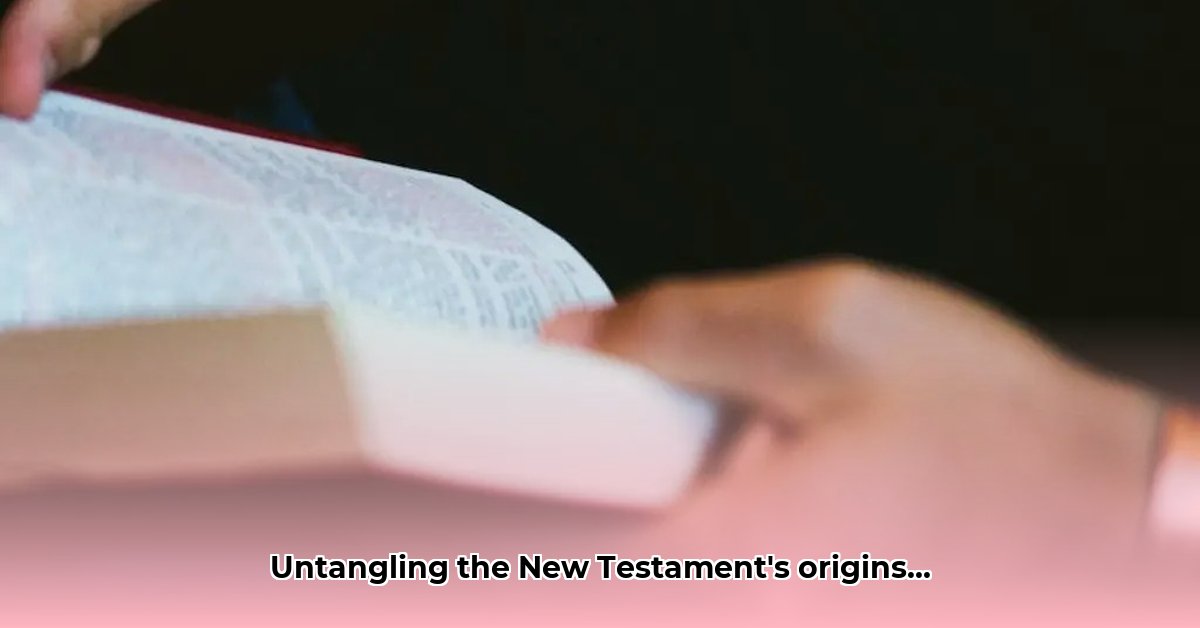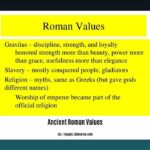Ever pondered the true genesis of the New Testament? It’s a question more nuanced than it initially appears! Diverse viewpoints exist among Christians, and this exploration delves into those varied perspectives. We’ll dissect interpretations of crucial biblical passages and historical moments to pinpoint the commencement of this pivotal era in Christian history. From examining the “New Covenant” concept to the sanctioned order of biblical books, and even the complexities of chronological alignment, prepare to engage in thought-provoking discourse, respecting diverse opinions while shaping your own informed conclusion. For a suggested reading order, see this helpful guide on Bible reading order.
Diverse Viewpoints on the Beginning of the New Testament
The starting point of the New Testament is not a straightforward matter. It has sparked debates among Christians for centuries, and there isn’t a universally accepted answer. Understanding these viewpoints necessitates delving into history, theology, and interpretive analysis. Let’s explore the primary perspectives to better grasp diverse viewpoints on the beginning of the New Testament.
New Covenant Theology: A Spiritual Foundation
Some believe the New Testament begins not with a specific book, but with the arrival of the Holy Spirit at Pentecost (Acts 2), fulfilling prophecies like Jeremiah 31 and marking the birth of the New Covenant. This considers the Gospels as a prelude, setting the stage for the Holy Spirit’s outpouring. The “new” element is the empowering of the early church and its mission to spread the Gospel, emphasizing spiritual transformation over strict chronological or literary order. Is this a compelling idea or a minimization of Jesus’ teachings?
This is a transformative perspective with focus on faith and its impact. However, some argue that it may minimize the crucial role of Jesus’ teachings and ministry described in the Gospels themselves. It represents a radical transformation of lives and the birth of a new spiritual community. This perspective emphasizes the fulfillment of Jeremiah’s prophecy (Jeremiah 31:31-34), where God promises a new covenant written on the hearts of believers, rather than on stone tablets. The Holy Spirit’s arrival empowers believers to live out this covenant, signifying a shift from external law to internal transformation.
Canonical Order: The Traditional Framework of Scripture
Many immediately point to the Gospel of Matthew as the New Testament’s beginning because it is the first book in most Bibles, reflecting the canonical order. This prioritizes the established sequence accepted as authoritative within the Christian tradition. The order tells a story, a progression of events and theological development rooted in long-standing church tradition. But does this simplicity overlook historical complexities in biblical canon formation?
This simple answer overlooks the complex historical processes that led to the selection and arrangement of the New Testament books. The order wasn’t divinely ordained or chosen in a vacuum; there were debates and decisions along the way impacting this arrangement. It is a matter of historical development, reflecting the views of those who compiled and ordered the New Testament books over time. The placement of Matthew at the beginning may also reflect its perceived role as a bridge between the Old and New Testaments, showcasing Jesus as the fulfillment of Jewish prophecy.
Chronological Perspective: Establishing an Order of Events
Another perspective tries to establish a factual timeline by figuring out when everything happened and when the books were written, based on the chronological perspective. This suggests that some of Paul’s letters may predate the Gospels, thereby making them the true starting point. This approach tries to establish historical accuracy—to tell the story in chronological sequence. Can we pinpoint date accuracy?
This is tremendously complex. Dating ancient texts precisely is notoriously difficult. There is often a considerable degree of uncertainty and ongoing debate among scholars discussing these things; pinpointing the exact dates remains a challenge even today. Even if we could be 100% sure of the writing dates, this chronological approach doesn’t necessarily dictate that the first written text is the most important starting point. For example, while 1 Thessalonians is often considered Paul’s earliest letter, the Gospels provide the foundational narrative of Jesus’ life and teachings.
Weighing Interpretations: Insights & Challenges
Each viewpoint provides valuable insights, yet there’s no universal agreement on where the New Testament begins. Here’s a concise breakdown of the strengths and weaknesses:
- New Covenant: Emphasizes spiritual transformation, fulfilling prophecy, but might downplay the Gospels’ significance.
- Canonical: Simple, reflects tradition, but ignores canon formation history and chronological issues.
- Chronological: Aims for accuracy, but faces challenges in dating early texts, which gives uncertainty.
Ultimately, there’s no definitive answer to the question of where the New Testament begins. Each perspective provides valuable insights. The beauty of Christianity lies in the diversity of interpretations and the ongoing conversation surrounding these complex theological questions. Rather than seeking a single, fixed answer, embracing the richness of these varying views fosters a deeper understanding of the New Testament itself and its impact on the history of Christianity.
Reconciling Differing Viewpoints on the New Testament’s Beginning
Key Takeaways:
- The New Testament’s beginning is not universally agreed upon among theologians and scholars.
- Diverse perspectives hold valid theological and historical justifications when analyzed.
- Examining these varying interpretations means studying the historical context in light of the different theological frameworks.
Reconciling these viewpoints necessitates respectful dialogue and a commitment to understanding diverse perspectives within the Christian faith.
The New Covenant Perspective: Fulfilling God’s Promises
This viewpoint emphasizes the fulfillment of God’s promises in the Old Testament through Jesus Christ, and sees the New Testament as the unfolding of a new covenant, a new agreement between God and humanity. Key passages like Hebrews 9:15 highlight the superior nature of this new arrangement, mediated by the sacrifice of Jesus. But, is there continuity with the apparent discontinuity?
Critics might argue this perspective minimizes the importance of Old Testament law. However, proponents counter that the new covenant doesn’t erase the Old Testament; it fulfills it, transforming its meaning. Consider Jesus’ words in Matthew 5:17: “Do not think that I have come to abolish the Law or the Prophets; I have not come to abolish them but to fulfill them.” This suggests a continuity where the Old Testament lays the groundwork, and the New Testament reveals its ultimate purpose. Think of it as a symphony—the Old Testament is the prelude, building anticipation for the main theme, Jesus Christ, revealed in the New Testament.
The Canonical Perspective: History of the Biblical Canon
Here, the focus shifts to the established order of the biblical canon. From this viewpoint, the New Testament begins with the Gospel of Matthew, the first book in the traditional order. This reflects the historical process of canon formation, a process of discerning which texts were authoritative for the early church. Does this capture the full complexity of the narrative?
This perspective, however, might be criticized for neglecting the chronological development of the early Christian movement. Some argue that a strict adherence to canonical order obscures the historical context in which the New Testament writings emerged. Understanding the canonization process involves recognizing the criteria used by early church leaders, such as apostolic authorship, consistency of teaching, and widespread acceptance within the Christian community. It’s like reading a biography out of chronological order—you get the story, but you miss the essential narrative flow.
The Chronological Perspective: Assessing the Dates of the Events
This perspective attempts to order the New Testament books by their likely date of composition and acknowledges the inherent challenges in dating ancient texts precisely. Scholars often use internal evidence, stylistic analysis, and historical context to make educated guesses. Is there a definitive chronological arrangement?
The difficulty lies in the lack of absolute certainty. Some texts’ dates remain debated, leading to different chronological sequences. The resulting timeline remains a work in progress, subject to ongoing scholarly discussions and refinements. For instance, some scholars place the writing of the Gospel of Mark before Matthew, influencing how we understand the development of the Gospel tradition. Different dates suggest differing interpretations of the events and their significance.
Synthesizing The Perspectives: An Appreciation for Texts and Interpretations
Reconciling these differing perspectives requires recognizing their strengths and weaknesses. Each offers valuable insights, but none provides a complete answer. The New Covenant approach emphasizes theological continuity and fulfillment, while the Canonical view highlights historical consensus and authority. The Chronological approach offers a nuanced understanding of historical development. Ultimately, how to reconcile differing viewpoints on the New Testament’s beginning is found in a humble appreciation of the complexity of the texts and the importance of respecting diverse interpretations.
Exploring Diverse Interpretations of New Testament Chronology and Theology
Key Takeaways:
- The New Testament’s starting point is a matter of ongoing theological debate, yielding varying perspectives.
- Views such as the New Covenant, the Canonical, and the Chronological shape our understanding.
- Each perspective offers valuable insights to improve scripture understanding.
The New Covenant Perspective: Starting Over Again
Where does the New Testament truly begin? For some, the answer lies in the concept of the “New Covenant.” This perspective emphasizes the transformative work of Jesus Christ, fulfilling Old Testament prophecies (Jeremiah 31:31-34; Hebrews 8:6-13). The New Covenant, ratified by Jesus’ sacrifice, represents a radical discontinuity with the old order. It’s not just a continuation; it’s a new beginning. Consider the contrast between the Law given through Moses and the grace and truth that came through Jesus Christ (John 1:17).
- Scipio Africanus: Hannibal’s Nemesis: Rise, Fall, and Legacy - August 2, 2025
- Unveiling Superorganisms: Are Ant Colonies One Mind? - August 2, 2025
- Unveiling The Northern Lights (Aurora Borealis): The Science Behind Nature’s Light Show: 2025 Guide - August 2, 2025















